
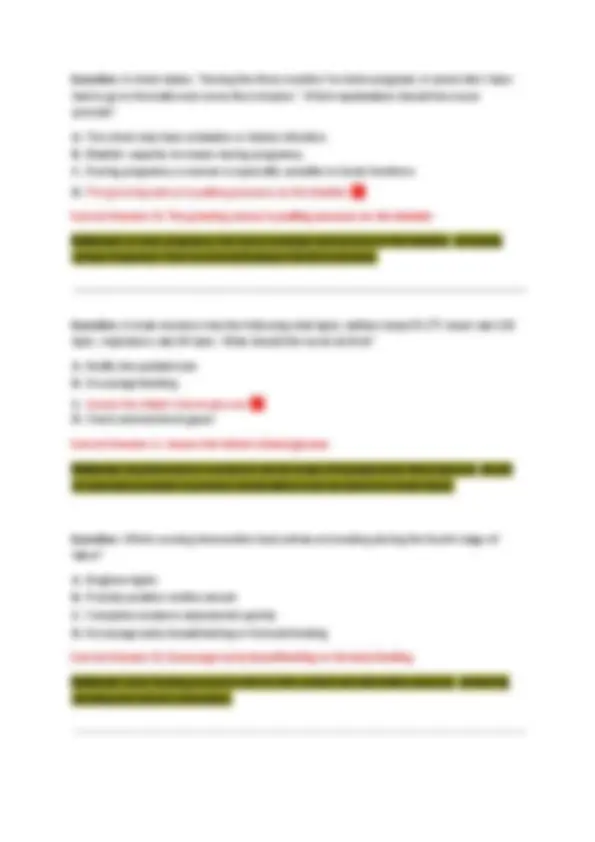

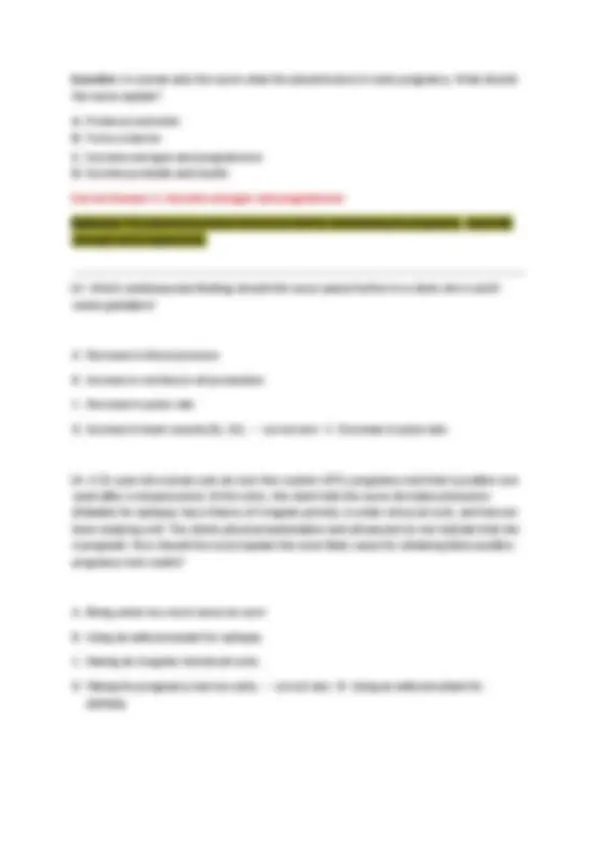
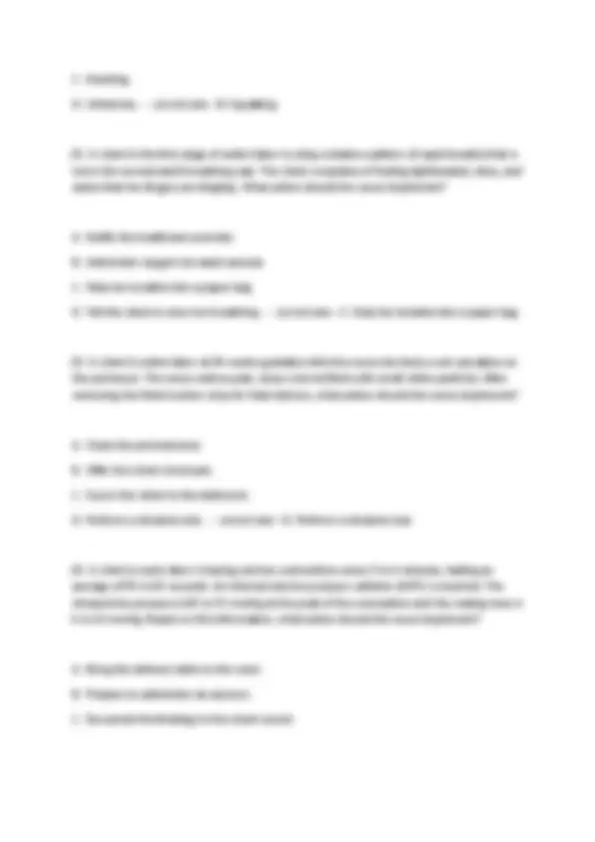
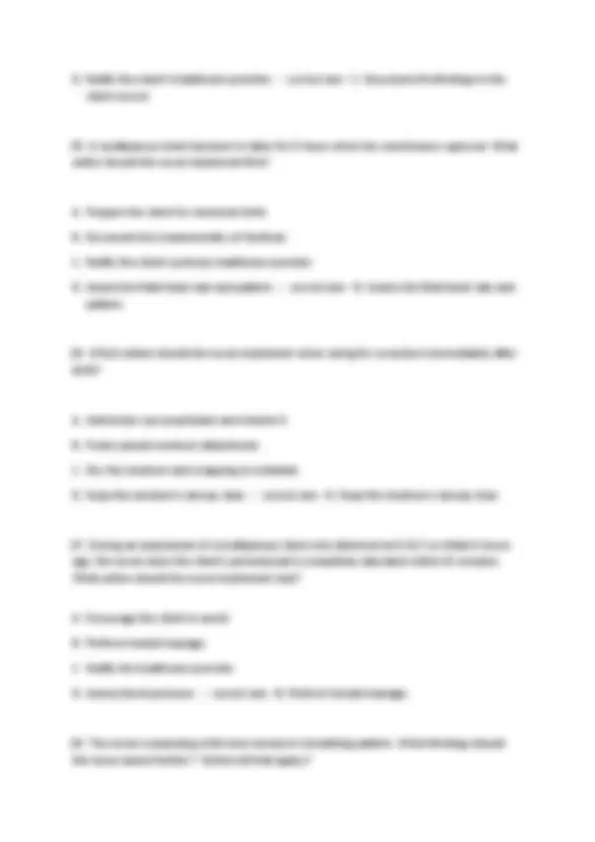
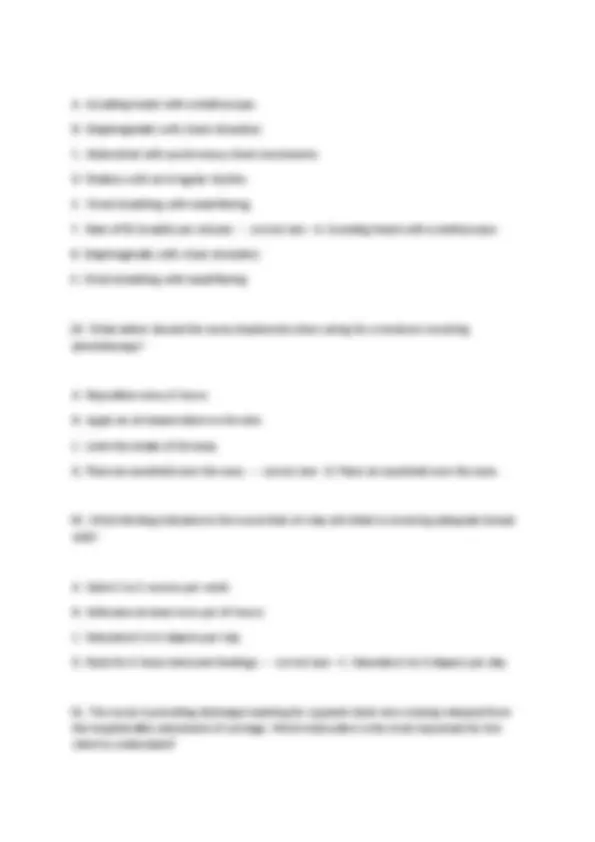
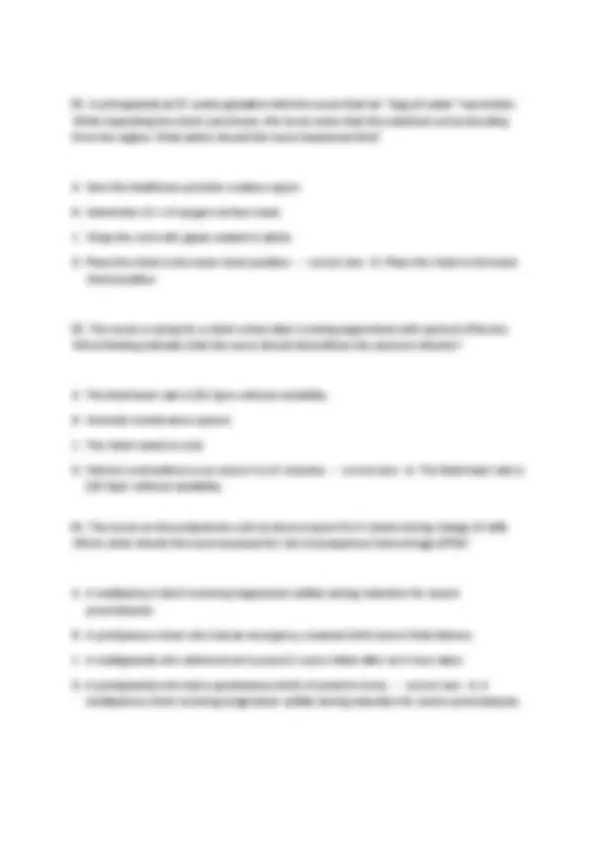
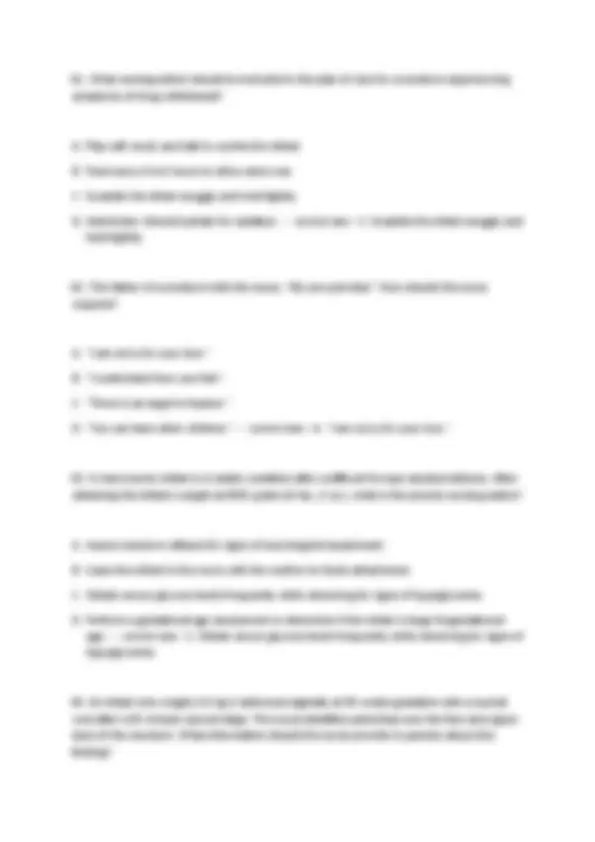

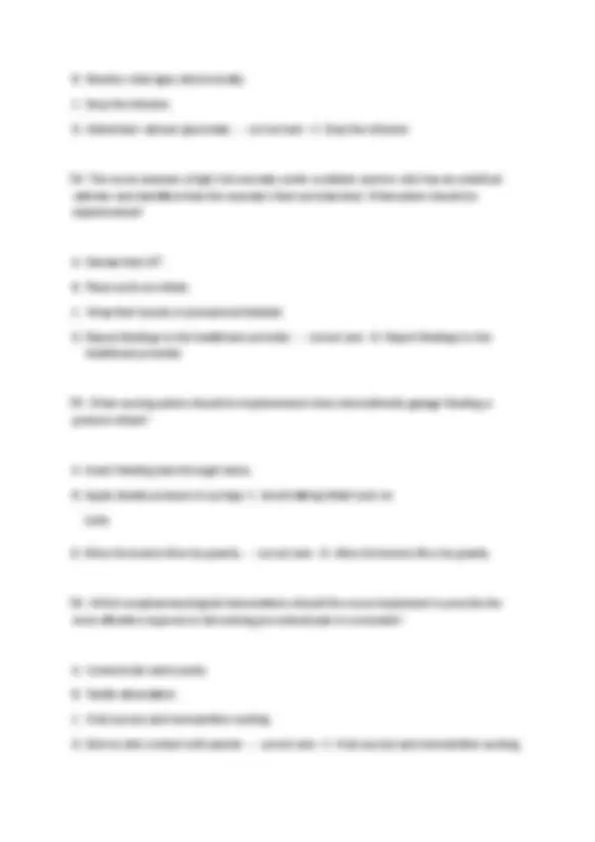
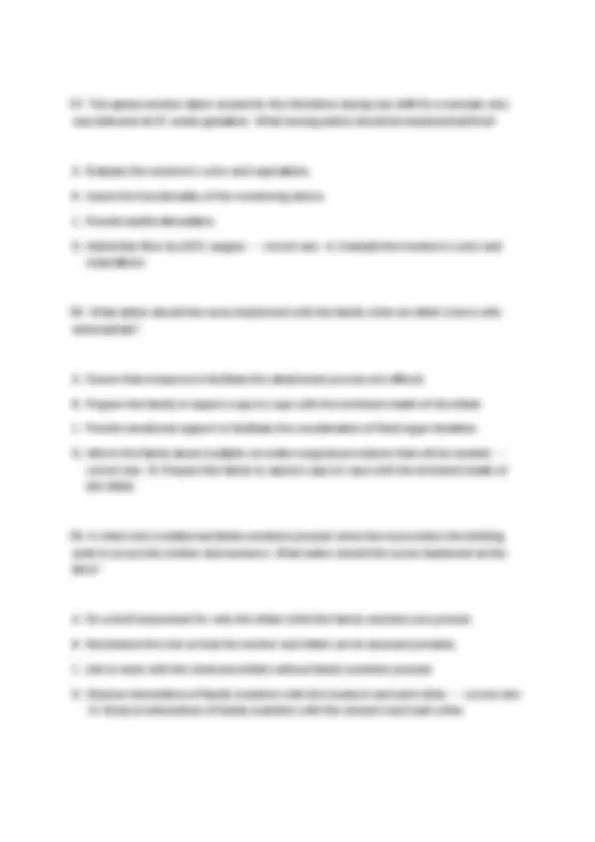
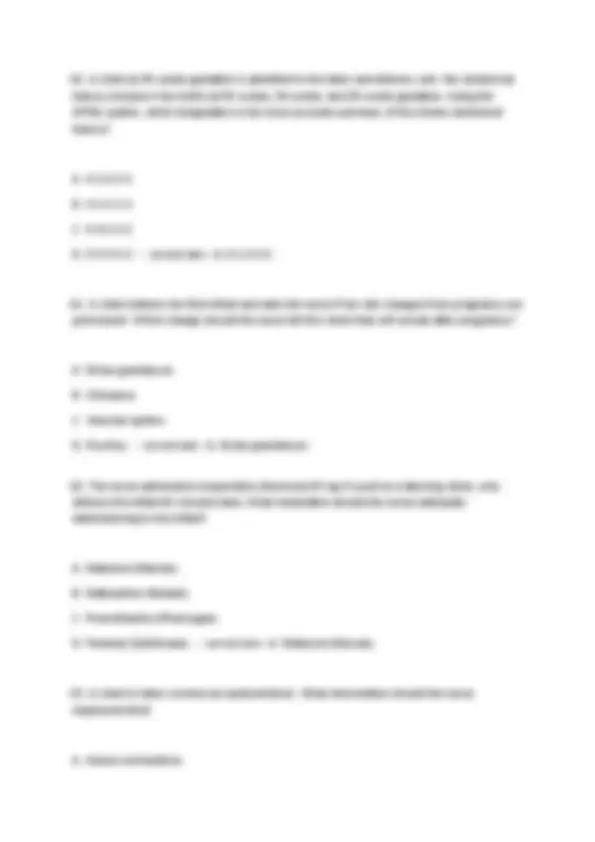
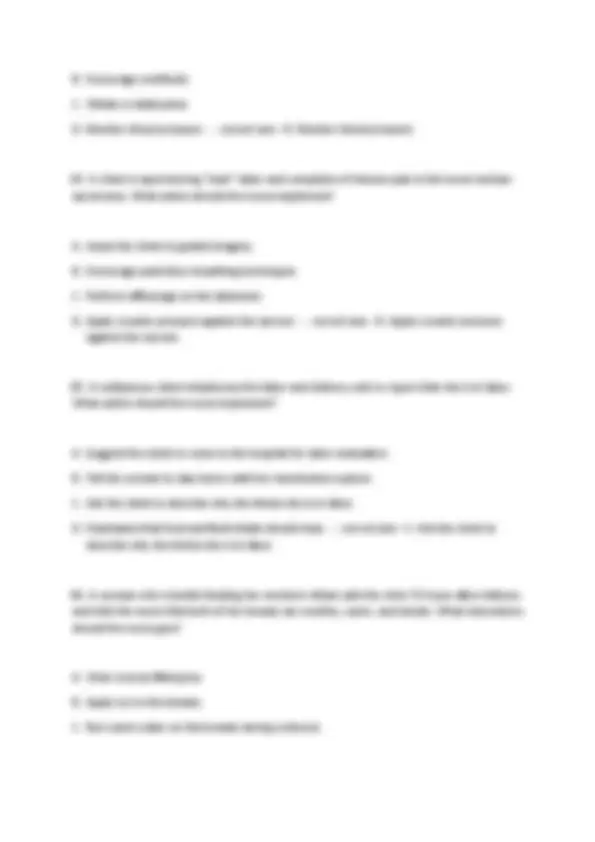
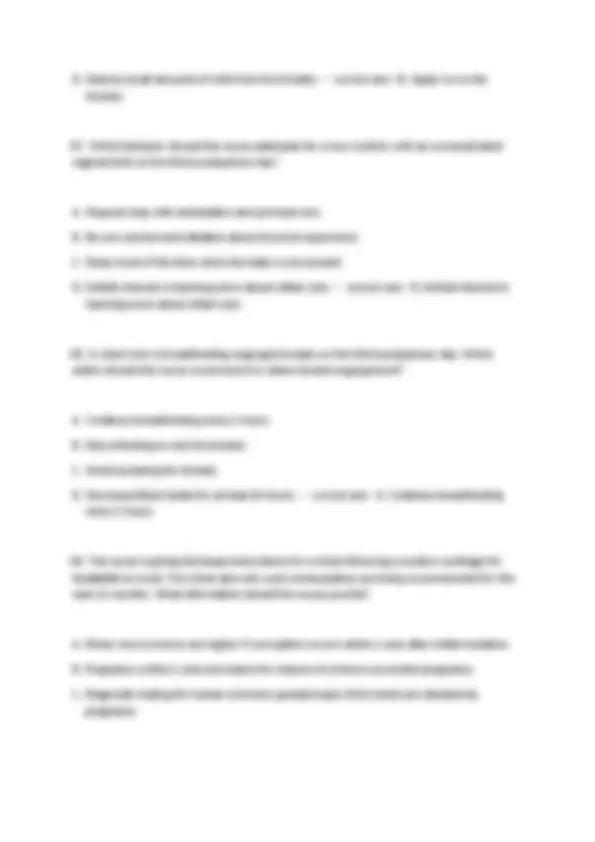
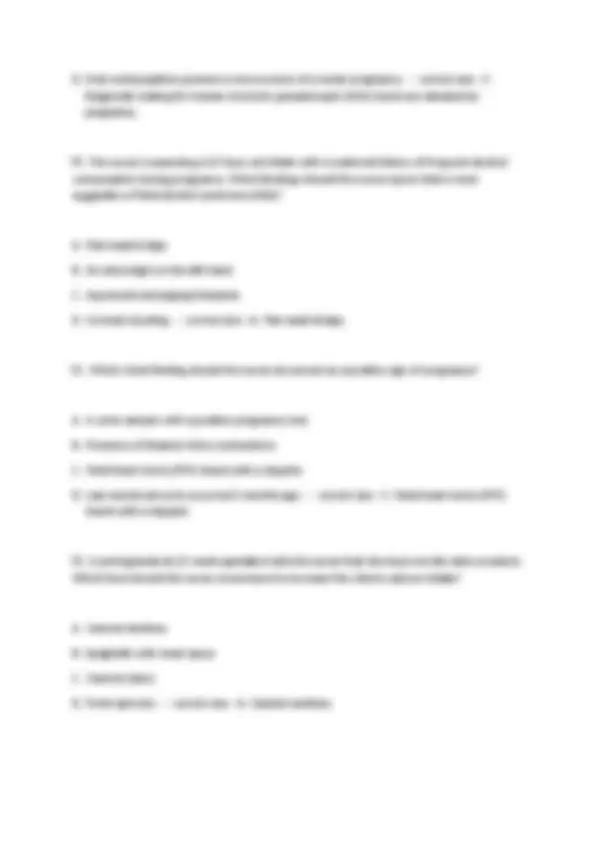



Study with the several resources on Docsity

Earn points by helping other students or get them with a premium plan


Prepare for your exams
Study with the several resources on Docsity

Earn points to download
Earn points by helping other students or get them with a premium plan
Community
Ask the community for help and clear up your study doubts
Discover the best universities in your country according to Docsity users
Free resources
Download our free guides on studying techniques, anxiety management strategies, and thesis advice from Docsity tutors
A practice exam for obstetrics in 2025, featuring expert-rated questions with answers and detailed rationales. It covers various topics related to prenatal care, labor and delivery, postpartum care, and newborn care. The questions assess knowledge of nursing interventions, vital sign interpretation, and client education, making it a valuable resource for exam preparation and reinforcing key concepts in obstetric nursing. It is designed to help students achieve success by providing comprehensive review and practice.
Typology: Exams
1 / 24

This page cannot be seen from the preview
Don't miss anything!

















Question: An infant in respiratory distress is on pulse oximetry with O₂ sat of 85%. What is the priority nursing intervention? A. Evaluate the blood pH B. Begin humidified oxygen via hood ✅ C. Place under a radiant warmer D. Stimulate crying Correct Answer: B. Begin humidified oxygen via hood Rationale: An O₂ saturation of 85% is below the acceptable range for newborns. Immediate oxygen support is needed to improve oxygenation and prevent hypoxic injury. Question: When assessing a newborn’s heart rate, which technique is most important? A. Count the heart rate for at least one full minute ✅ B. Quiet the infant first C. Palpate the umbilical cord D. Listen at the apex Correct Answer: A. Count the heart rate for at least one full minute Rationale: A full minute count is necessary due to the variability in newborn heart rates, especially right after birth. Question: A mother refuses a vitamin K injection for her newborn. What is the best nursing response? A. It was prescribed by the provider B. Explore the mother’s concerns ✅
C. Remind her it's painless D. Say it’s mandatory by law Correct Answer: B. Explore the mother’s concerns Rationale: A therapeutic, client-centered approach involves understanding the mother's reasoning and providing evidence-based education to address fears. Question: Which instruction is most important when teaching a breastfeeding mother about diet? A. Double prenatal milk intake B. Increase calories by 500/day C. Avoid spicy foods D. Avoid alcohol Correct Answer: D. Avoid alcohol Rationale: Alcohol passes into breast milk and can affect the infant's development. Avoiding it entirely is the safest recommendation. Question: At 10 weeks gestation, a high-risk multiparous client with a family history of Down syndrome is admitted for observation following a chorionic villus sampling (CVS) procedure. What assessment finding requires immediate intervention? A. Uterine cramping ✅ B. Intermittent nausea C. Systolic blood pressure < 100 mmHg D. Abdominal tenderness Correct Answer: A. Uterine cramping Rationale: Uterine cramping after CVS may indicate the beginning of a miscarriage or uterine irritation and requires immediate intervention. Nausea and mild abdominal tenderness can be common, but cramping is more concerning at this gestational stage.
Question: A client asks about congenital heart defect (CHD) risks. What response best explains when CHDs may occur? A. They occur in the first trimester B. The heart develops in weeks 3– 5 ✅ C. It depends on causes D. We don’t really know Correct Answer: B. The heart develops in weeks 3– 5 Rationale: The fetal heart begins forming early, and structural defects often arise between weeks 3–5 of gestation. Question: A client says her baby responds to her voice. Her husband disagrees. What should the nurse say? A. It helps bonding B. The provider should check hearing C. The fetus can hear and respond D. Women imagine fetal movements Correct Answer: C. The fetus can hear and respond Rationale: By the second trimester, the fetus can hear and respond to sound, especially the mother’s voice. Question: A client says her baby jumped when she dropped a utensil. What should the nurse say? A. Report it to provider B. Fetuses respond to sound by 24 weeks C. It's the acoustic reflex D. It’s a coincidence Correct Answer: B. Fetuses respond to sound by 24 weeks Rationale: Fetal hearing is developed by 24 weeks, and responses like startling to loud noises are expected. 12.
Question: A woman asks the nurse what the placenta does in early pregnancy. What should the nurse explain? A. Produces nutrients B. Forms a barrier C. Secretes estrogen and progesterone D. Excretes prolactin and insulin Correct Answer: C. Secretes estrogen and progesterone Rationale: The placenta produces hormones vital for maintaining the pregnancy, especially estrogen and progesterone.
B. Wine can be consumed several times a week after the first trimester. C. During second trimester beer can be consumed without harm to the fetus. D. Abstinence is strongly recommended throughout the pregnancy. - - correct ans- - D. Abstinence is strongly recommended throughout the pregnancy.
C. Kneeling. D. Lithotomy. - - correct ans- - B. Squatting.
A. Grunting heard with a stethoscope. B. Diaphragmatic with chest retraction. C. Abdominal with synchronous chest movements. D. Shallow with an irregular rhythm. E. Chest breathing with nasal flaring. F. Rate of 58 breaths per minute. - - correct ans- - A. Grunting heard with a stethoscope. B. Diaphragmatic with chest retraction. E. Chest breathing with nasal flaring.
A. Arrange for home uterine monitoring. B. Plan for a possible cesarean birth. C. Report uterine cramping or low backache. D. Make arrangements for care at home. - - correct ans- - C. Report uterine cramping or low backache.
A. Perform a vaginal examination. B. Increase IV fluids. C. Administer oxygen. D. Monitor fetal status. E. Place the client in a lateral position. F. Assist client to a sitting position. - - correct ans- - B. Increase IV fluids. C. Administer oxygen. D. Monitor fetal status. E. Place the client in a lateral position.